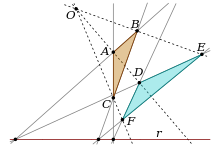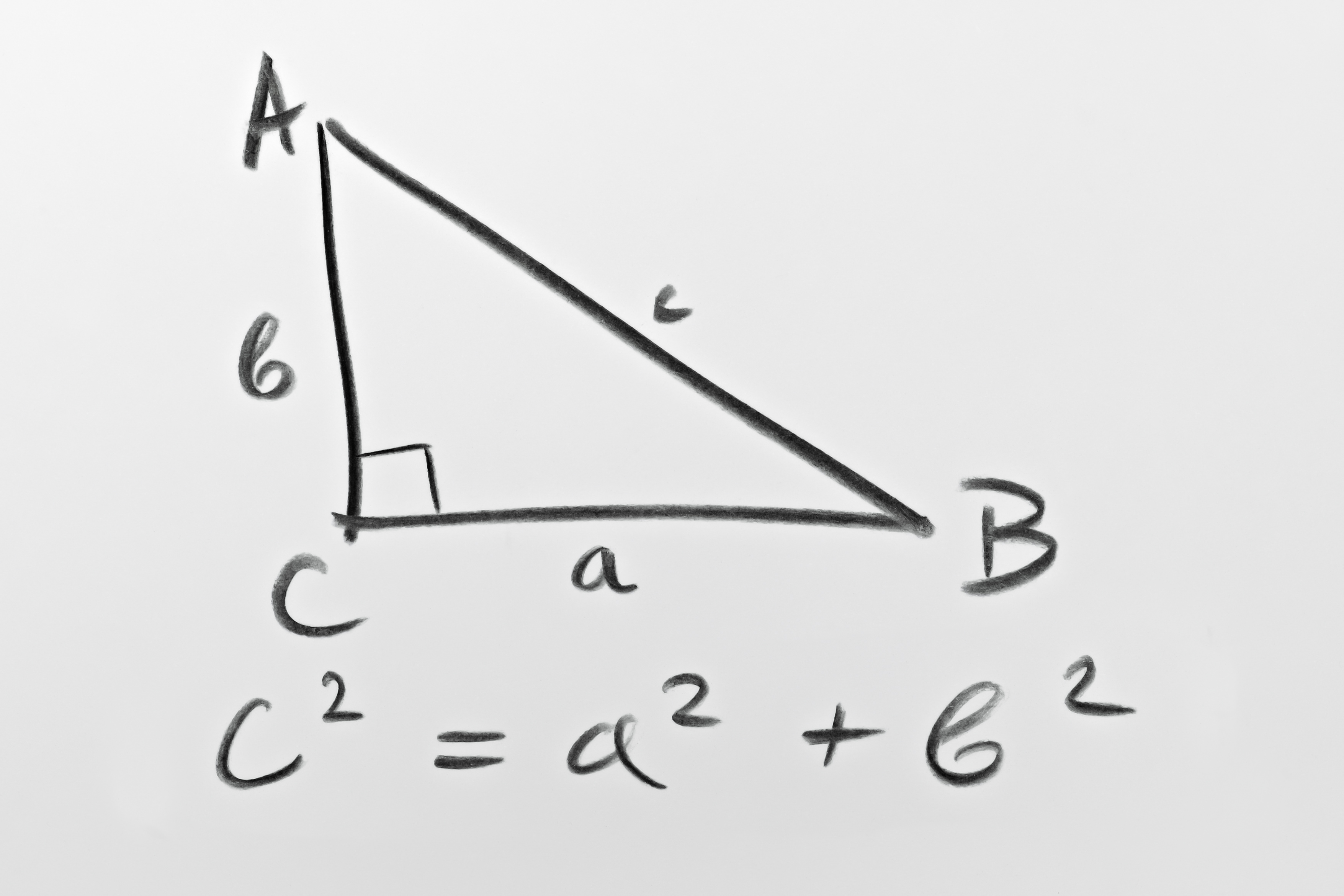Geometry, the branch of mathematics concerned with the shape of individual objects, spatial relationships among various objects, and the properties of surrounding space. Geometry is the fourth math course in high school and will guide you through among other things points, lines, planes, angles, parallel lines, triangles, similarity, trigonometry, quadrilaterals, transformations, circles and area. This Geometry math course is divided into 10 chapters and each chapter is divided into several lessons. Free, interactive video lessons on geometry! The mathematics of lines, shapes, and angles. Essential stuff for describing the world around you. 1.0 Basics of Geometry. 2.0 Reasoning and Proof. 3.0 Parallel and Perpendicular Lines. 4.0 Triangles and Congruence. 5.0 Relationships with Triangles.
Geometry is the study of figures in a space of a given number of dimensions and of a given type. The most common types of geometry are plane geometry (dealing with objects like the point, line, circle, triangle, and polygon), solid geometry (dealing with objects like the line, sphere, and polyhedron), and spherical geometry (dealing with objects like the spherical triangle and spherical polygon). Geometry was part of the quadrivium taught in medieval universities.
A mathematical pun notes that without geometry, life is pointless. An old children's joke asks, 'What does an acorn say when it grows up?' and answers, 'Geometry' ('gee, I'm a tree').
Historically, the study of geometry proceeds from a small number of accepted truths (axioms or postulates), then builds up true statements using a systematic and rigorous step-by-step proof. However, there is much more to geometry than this relatively dry textbook approach, as evidenced by some of the beautiful and unexpected results of projective geometry (not to mention Schubert's powerful but questionable enumerative geometry).
The late mathematician E. T. Bell has described geometry as follows (Coxeter and Greitzer 1967, p. 1): 'With a literature much vaster than those of algebra and arithmetic combined, and at least as extensive as that of analysis, geometry is a richer treasure house of more interesting and half-forgotten things, which a hurried generation has no leisure to enjoy, than any other division of mathematics.' While the literature of algebra, arithmetic, and analysis has grown extensively since Bell's day, the remainder of his commentary holds even more so today.
Formally, a geometry is defined as a complete locally homogeneous Riemannian manifold. In , the possible geometries are Euclidean planar, hyperbolic planar, and elliptic planar. In , the possible geometries include Euclidean, hyperbolic, and elliptic, but also include five other types.
SEE ALSO:Absolute Geometry, Affine Geometry, Analytic Geometry, Cartesian Coordinates, Combinatorial Geometry, Computational Geometry, Differential Geometry, Discrete Geometry, Enumerative Geometry, Finsler Geometry, Inversive Geometry, Kawaguchi Geometry, Nil Geometry, Non-Euclidean Geometry, Ordered Geometry, Plane Geometry, Projective Geometry, Sol Geometry, Solid Geometry, Spherical Geometry, Stochastic Geometry, Thurston's Geometrization ConjectureREFERENCES:Altshiller-Court, N. College Geometry: A Second Course in Plane Geometry for Colleges and Normal Schools, 2nd ed., rev. enl. New York: Barnes and Noble, 1952.
Bogomolny, A. 'Geometry.' https://www.cut-the-knot.org/geometry.shtml.
Bold, B. FamousProblems of Geometry and How to Solve Them. New York: Dover, 1964.
Cinderella, Inc. 'Cinderella: The Interactive Geometry Software.' https://www.cinderella.de/.
Coxeter, H. S. M. Introductionto Geometry, 2nd ed. New York: Wiley, 1969.
Coxeter, H. S. M. TheBeauty of Geometry: Twelve Essays. New York: Dover, 1999.
Coxeter, H. S. M. and Greitzer, S. L. GeometryRevisited. Washington, DC: Math. Assoc. Amer., 1967.
Croft, H. T.; Falconer, K. J.; and Guy, R. K. UnsolvedProblems in Geometry. New York: Springer-Verlag, 1994.
Davis, C.; Grünbaum, B.; and Scherk, F. A. TheGeometric Vein: The Coxeter Festschrift. New York: Springer, 1981.
Eppstein, D. 'Geometry Junkyard.' https://www.ics.uci.edu/~eppstein/junkyard/.
Eppstein, D. 'Many-Dimensional Geometry.' https://www.ics.uci.edu/~eppstein/junkyard/highdim.html.
Eppstein, D. 'Planar Geometry.' https://www.ics.uci.edu/~eppstein/junkyard/2d.html.
Eppstein, D. 'Three-Dimensional Geometry.' https://www.ics.uci.edu/~eppstein/junkyard/3d.html.
Eves, H. W. ASurvey of Geometry, rev. ed. Boston, MA: Allyn and Bacon, 1972.
Geometry Center. https://www.geom.umn.edu.
Ghyka, M. C. TheGeometry of Art and Life, 2nd ed. New York: Dover, 1977.
Hilbert, D. The Foundations of Geometry, 2nd ed. Chicago, IL: The Open Court Publishing Co., 1921.
Ivins, W. M. Artand Geometry. New York: Dover, 1964.
Johnson, R. A. Modern Geometry: An Elementary Treatise on the Geometry of the Triangle and the Circle. Boston, MA: Houghton Mifflin, 1929.


King, J. and Schattschneider, D. (Eds.). Geometry Turned On: Dynamic Software in Learning, Teaching and Research. Washington, DC: Math. Assoc. Amer., 1997.
Klee, V. 'Some Unsolved Problems in Plane Geometry.' Math. Mag.52,131-145, 1979.
Ultimate sonic flash. Klein, F. FamousProblems of Elementary Geometry and Other Monographs. New York: Dover, 1956.
MathPages. 'Geometry.' https://www.mathpages.com/home/igeometr.htm.
Melzak, Z. A. Invitationto Geometry. New York: Wiley, 1983.
Meschkowski, H. Unsolvedand Unsolvable Problems in Geometry. London: Oliver & Boyd, 1966.
Moise, E. E. Elementary Geometry from an Advanced Standpoint, 3rd ed. Reading, MA: Addison-Wesley, 1990.
Ogilvy, C. S. 'Some Unsolved Problems of Modern Geometry.' Ch. 11 in Excursions in Geometry. New York: Dover, pp. 143-153, 1990.
Playfair, J. Elements of Geometry: Containing the First Six Books of Euclid, with a Supplement on the Circle and the Geometry of Solids to which are added Elements of Plane and Spherical Trigonometry. New York: W. E. Dean, 1861.
Simon, M. Über die Entwicklung der Elementargeometrie im XIX. Jahrhundert.Leipzig: Teubner, pp. 97-105, 1906.
Townsend, R. Chapters on the Modern Geometry of the Point, Line, and Circle, Being the Substance of Lectures Delivered in the University of Dublin to the Candidates for Honors of the First Year in Arts, 2 vols. Dublin: Hodges, Smith and Co., 1863.
Uspenskii, V. A. SomeApplications of Mechanics to Mathematics. New York: Blaisdell, 1961.

Weisstein, E. W. 'Books about Geometry.' https://www.ericweisstein.com/encyclopedias/books/Geometry.html.
Woods, F. S. Higher Geometry: An Introduction to Advanced Methods in Analytic Geometry. New York: Dover, 1961.
Referenced on Wolfram|Alpha: GeometryCITE THIS AS:Weisstein, Eric W. 'Geometry.' From MathWorld--A Wolfram Web Resource. https://mathworld.wolfram.com/Geometry.html
Geometry is the study of figures in a space of a given number of dimensions and of a given type. The most common types of geometry are plane geometry (dealing with objects like the point, line, circle, triangle, and polygon), solid geometry (dealing with objects like the line, sphere, and polyhedron), and spherical geometry (dealing with objects like the spherical triangle and spherical polygon). Geometry was part of the quadrivium taught in medieval universities.
A mathematical pun notes that without geometry, life is pointless. An old children's joke asks, 'What does an acorn say when it grows up?' and answers, 'Geometry' ('gee, I'm a tree').
Historically, the study of geometry proceeds from a small number of accepted truths (axioms or postulates), then builds up true statements using a systematic and rigorous step-by-step proof. However, there is much more to geometry than this relatively dry textbook approach, as evidenced by some of the beautiful and unexpected results of projective geometry (not to mention Schubert's powerful but questionable enumerative geometry).
The late mathematician E. T. Bell has described geometry as follows (Coxeter and Greitzer 1967, p. 1): 'With a literature much vaster than those of algebra and arithmetic combined, and at least as extensive as that of analysis, geometry is a richer treasure house of more interesting and half-forgotten things, which a hurried generation has no leisure to enjoy, than any other division of mathematics.' While the literature of algebra, arithmetic, and analysis has grown extensively since Bell's day, the remainder of his commentary holds even more so today.
Formally, a geometry is defined as a complete locally homogeneous Riemannian manifold. In , the possible geometries are Euclidean planar, hyperbolic planar, and elliptic planar. In , the possible geometries include Euclidean, hyperbolic, and elliptic, but also include five other types.
SEE ALSO:Absolute Geometry, Affine Geometry, Analytic Geometry, Cartesian Coordinates, Combinatorial Geometry, Computational Geometry, Differential Geometry, Discrete Geometry, Enumerative Geometry, Finsler Geometry, Inversive Geometry, Kawaguchi Geometry, Nil Geometry, Non-Euclidean Geometry, Ordered Geometry, Plane Geometry, Projective Geometry, Sol Geometry, Solid Geometry, Spherical Geometry, Stochastic Geometry, Thurston's Geometrization ConjectureREFERENCES:Altshiller-Court, N. College Geometry: A Second Course in Plane Geometry for Colleges and Normal Schools, 2nd ed., rev. enl. New York: Barnes and Noble, 1952.
Bogomolny, A. 'Geometry.' https://www.cut-the-knot.org/geometry.shtml.
Bold, B. FamousProblems of Geometry and How to Solve Them. New York: Dover, 1964.
Cinderella, Inc. 'Cinderella: The Interactive Geometry Software.' https://www.cinderella.de/.
Coxeter, H. S. M. Introductionto Geometry, 2nd ed. New York: Wiley, 1969.
Coxeter, H. S. M. TheBeauty of Geometry: Twelve Essays. New York: Dover, 1999.
Coxeter, H. S. M. and Greitzer, S. L. GeometryRevisited. Washington, DC: Math. Assoc. Amer., 1967.
Croft, H. T.; Falconer, K. J.; and Guy, R. K. UnsolvedProblems in Geometry. New York: Springer-Verlag, 1994.
Davis, C.; Grünbaum, B.; and Scherk, F. A. TheGeometric Vein: The Coxeter Festschrift. New York: Springer, 1981.
Eppstein, D. 'Geometry Junkyard.' https://www.ics.uci.edu/~eppstein/junkyard/.
Eppstein, D. 'Many-Dimensional Geometry.' https://www.ics.uci.edu/~eppstein/junkyard/highdim.html.
Eppstein, D. 'Planar Geometry.' https://www.ics.uci.edu/~eppstein/junkyard/2d.html.
Eppstein, D. 'Three-Dimensional Geometry.' https://www.ics.uci.edu/~eppstein/junkyard/3d.html.
Eves, H. W. ASurvey of Geometry, rev. ed. Boston, MA: Allyn and Bacon, 1972.
Geometry Center. https://www.geom.umn.edu.
Ghyka, M. C. TheGeometry of Art and Life, 2nd ed. New York: Dover, 1977.
Hilbert, D. The Foundations of Geometry, 2nd ed. Chicago, IL: The Open Court Publishing Co., 1921.
Ivins, W. M. Artand Geometry. New York: Dover, 1964.
Johnson, R. A. Modern Geometry: An Elementary Treatise on the Geometry of the Triangle and the Circle. Boston, MA: Houghton Mifflin, 1929.
King, J. and Schattschneider, D. (Eds.). Geometry Turned On: Dynamic Software in Learning, Teaching and Research. Washington, DC: Math. Assoc. Amer., 1997.
Klee, V. 'Some Unsolved Problems in Plane Geometry.' Math. Mag.52,131-145, 1979.
Klein, F. FamousProblems of Elementary Geometry and Other Monographs. New York: Dover, 1956.
MathPages. 'Geometry.' https://www.mathpages.com/home/igeometr.htm.
Melzak, Z. A. Invitationto Geometry. New York: Wiley, 1983.
Geometry Calculator

Meschkowski, H. Unsolvedand Unsolvable Problems in Geometry. London: Oliver & Boyd, 1966.
Geometry Dash Subzero
Moise, E. E. Elementary Geometry from an Advanced Standpoint, 3rd ed. Reading, MA: Addison-Wesley, 1990.
Ogilvy, C. S. 'Some Unsolved Problems of Modern Geometry.' Ch. 11 in Excursions in Geometry. New York: Dover, pp. 143-153, 1990.
Playfair, J. Elements of Geometry: Containing the First Six Books of Euclid, with a Supplement on the Circle and the Geometry of Solids to which are added Elements of Plane and Spherical Trigonometry. New York: W. E. Dean, 1861.
Simon, M. Über die Entwicklung der Elementargeometrie im XIX. Jahrhundert.Leipzig: Teubner, pp. 97-105, 1906.
Geometry Calculator
Townsend, R. Chapters on the Modern Geometry of the Point, Line, and Circle, Being the Substance of Lectures Delivered in the University of Dublin to the Candidates for Honors of the First Year in Arts, 2 vols. Dublin: Hodges, Smith and Co., 1863.
Uspenskii, V. A. SomeApplications of Mechanics to Mathematics. New York: Blaisdell, 1961.
Weisstein, E. W. 'Books about Geometry.' https://www.ericweisstein.com/encyclopedias/books/Geometry.html.
Woods, F. S. Higher Geometry: An Introduction to Advanced Methods in Analytic Geometry. New York: Dover, 1961.
Referenced on Wolfram|Alpha: GeometryCITE THIS AS:Weisstein, Eric W. 'Geometry.' From MathWorld--A Wolfram Web Resource. https://mathworld.wolfram.com/Geometry.html
